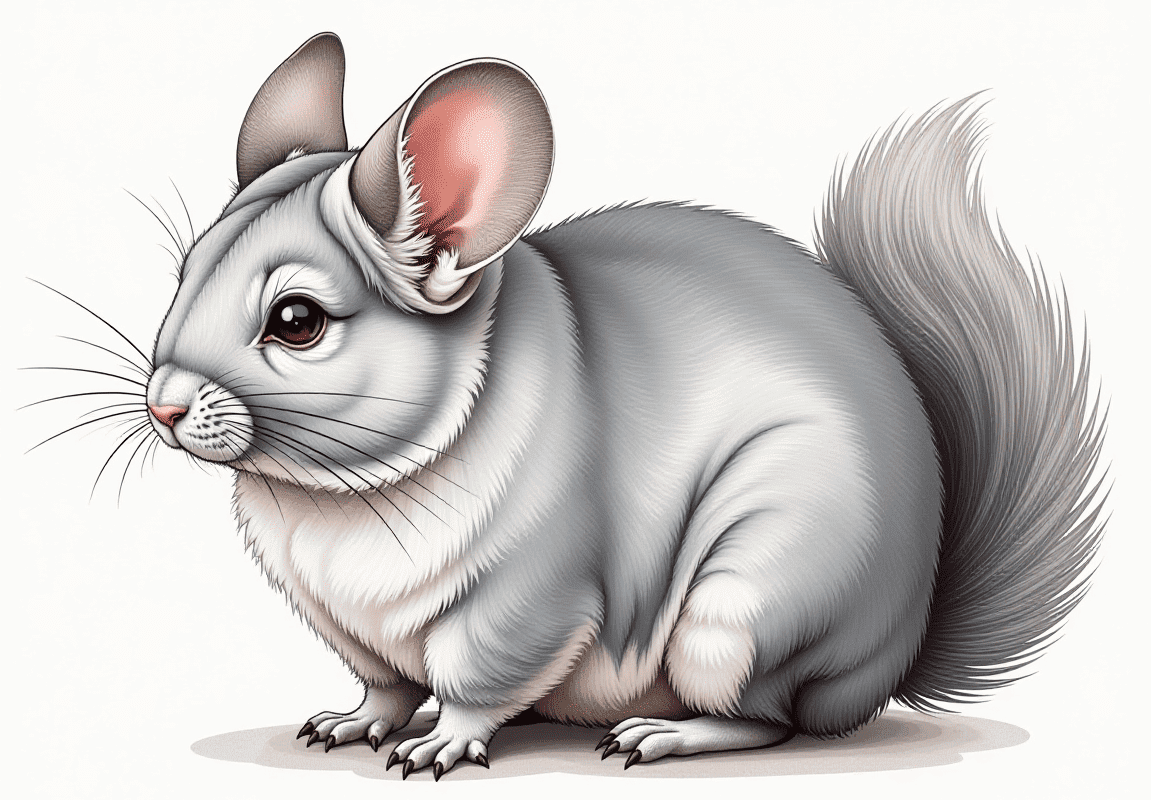Where Do Chinchillas Come From?
I’ve always been fascinated by chinchillas—those adorable, fluffy creatures with their silky fur. But as I started looking into them, I realized there’s so much more to these animals than their cute looks. Have you ever wondered where do chinchillas come from? Their story is as intriguing as it is heartbreaking, weaving through the Andes Mountains, indigenous cultures, and global conservation efforts. Let’s dive into the journey of chinchillas, exploring their origins, natural habitat, and their surprising role in history.
Natural Habitat and Origins
Chinchillas are native to the rugged Andes Mountains of South America. These high-altitude regions, spanning across countries like Chile, Peru, and Bolivia, are characterized by cool temperatures, rocky terrain, and sparse vegetation. Chinchillas have adapted beautifully to this environment, developing dense fur to protect themselves from the cold and agile bodies to navigate the rocky cliffs.

Two primary species of chinchillas exist: Chinchilla lanigera, which is more commonly found and has been domesticated, and Chinchilla brevicaudata, a rarer species with a shorter tail. Both species have faced immense challenges in the wild due to human activities. Their dense fur, which is among the softest in the animal kingdom, is a result of the harsh conditions they’ve evolved to endure. Interestingly, chinchilla fur is so dense that parasites like fleas can’t survive on them, as there’s no space to burrow into their skin.

Understanding their natural habitat helps us appreciate the unique traits of chinchillas, from their incredible agility to their ability to thrive in extreme conditions.
Human Connection and Domestication
Chinchillas have a long history of interaction with humans, dating back to the Inca Empire. Indigenous people highly valued their fur for its unparalleled softness and used it to make luxurious clothing for nobility. However, this early admiration marked the beginning of their exploitation. During the 19th and early 20th centuries, chinchilla populations faced devastating declines due to the booming fur trade.
At one point, chinchilla fur was considered so valuable that hundreds of thousands of these animals were hunted in the wild. By the time people realized the extent of the damage, chinchillas were on the brink of extinction. In the 1920s, a mining engineer named Mathias Chapman managed to capture a few wild chinchillas and breed them in captivity, effectively saving them from complete extinction. Today, most pet chinchillas descend from these early captive populations.
Domesticated chinchillas have become popular pets worldwide, thanks to their playful personalities and low-maintenance care needs. However, it’s crucial to understand their behaviors—like their preference for dust baths instead of water—to ensure they thrive in a home environment.
Conservation and Current Status
Despite their popularity as pets, chinchillas face significant conservation challenges in the wild. Habitat destruction, mining activities, and illegal poaching have further reduced their numbers. According to the International Union for Conservation of Nature (IUCN), both species of chinchillas are listed as endangered, with their wild populations continuing to dwindle.

Conservation organizations are working tirelessly to protect these animals. Efforts include creating protected areas in their native habitats and educating locals about sustainable practices. Supporting these initiatives is vital for preserving wild chinchilla populations.
Why does this matter? Chinchillas play an essential role in their ecosystem, from controlling certain vegetation to serving as prey for larger predators. Losing them could disrupt the delicate balance of their environment, underscoring the importance of biodiversity.
Fun Facts About Chinchillas
One of the most endearing things about chinchillas is their unique characteristics. Did you know that chinchillas take dust baths to keep their fur clean? Unlike most animals, their dense fur traps moisture, making water baths a no-go. Instead, they roll around in fine volcanic ash to absorb oils and dirt.

Their fur density is another remarkable feature—each follicle can produce up to 50 hairs, which is why their fur feels so luxurious. However, this also makes them vulnerable to overheating, as their bodies aren’t designed for warm climates.
Chinchillas also have a surprisingly long lifespan compared to other rodents. In captivity, they can live up to 15–20 years with proper care, while wild chinchillas have shorter lifespans due to predators and environmental challenges.
Why It’s Important to Understand Chinchillas’ Origins
Learning about where chinchillas come from not only deepens our appreciation for these animals but also highlights the broader impact of human actions on wildlife. From the slopes of the Andes Mountains to homes around the world, chinchillas’ journey reminds us of the delicate balance between admiration and exploitation.
By supporting ethical pet practices and conservation efforts, we can help protect these incredible creatures for future generations. Whether it’s through spreading awareness, donating to conservation projects, or adopting chinchillas responsibly, every little action counts.
Conclusion
From their rugged beginnings in the Andes Mountains to their role as cherished pets today, chinchillas have a fascinating and complex history. Their story serves as a reminder of the importance of preserving wildlife and respecting nature. As someone who has grown to admire these animals, I hope this article inspires you to learn more about them and perhaps even contribute to their conservation.
If you’ve ever owned a chinchilla or have a story about encountering one, I’d love to hear it. Let’s work together to ensure these adorable creatures continue to thrive in the wild and in our hearts.
